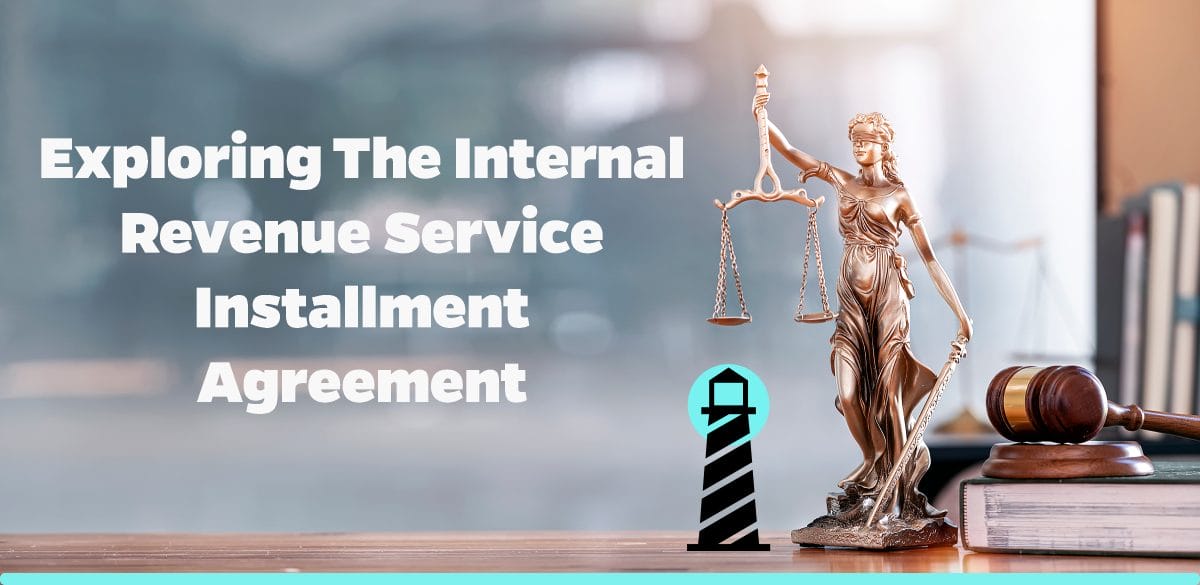Exploring the Internal Revenue Service Installment Agreement
At Brightside Tax Relief, our nationwide tax relief service, we know that the idea of owing money to the Internal Revenue Service (IRS) can be overwhelming for many taxpayers. It can invoke feelings of stress, uncertainty, and fear. These emotions can, in turn, lead to procrastination, confusion, and in some cases, inaction, none of which help in resolving your tax debt. However, there is a little-known strategy that may provide an avenue of resolution: the Internal Revenue Service Installment Agreement.
In this feature, embark with us on an in-depth exploration of the IRS Installment Agreement. With a blend of well-researched, educative content, we aim to unravel the mystery of this survival tool for many average American taxpayers. By unpacking its benefits, mode of operations, qualifications, limitations, and possible pitfalls, we hope to arm you with the necessary information to navigate your way through any tax debt situation effectively.
Understanding the IRS Installment Agreement
Quite simply, the IRS Installment Agreement is a debt repayment plan established between a taxpayer and the IRS. The plan enables taxpayers to pay back their owed taxes over a designated period, in manageable, monthly installments. This agreement provides the taxpayer with some financial breathing room, while also ensuring that the IRS recovers the owed taxes.
Some key aspects of the Installment Agreement include:
– It’s a legally binding agreement
– It allows for manageable payments spread over months or years
– It prevents or halts aggressive collection actions from the IRS
– It requires the taxpayer to continue filing their taxes and making payments
– Defaulting on the agreement can result in penalties and an immediate demand for the full tax liability.
Types of IRS Installment Agreements
The IRS recognizes five different types of Installment Agreements, depending on the amount owed and the taxpayer’s specific situation. These include Guaranteed Installment Agreements, Streamlined Installment Agreements, Non-Streamlined Installment Agreements, Partial Payment Installment Agreements, and Installment Agreements for businesses. Each agreement has its own set of criteria, benefits, and limitations, tailored accordingly to the taxpayer’s ability to repay their debt.
Qualifying for an Installment Agreement
Although an Installment Agreement can be a lifeline for taxpayers in distress, it’s not automatically available to everyone. Among other factors, the IRS considers your income, expenses, ability to pay, the amount owed, and your previous compliance with tax filing and payment obligations when determining your eligibility for an Installment Agreement.
Initiating an IRS Installment Agreement
To initiate an Installment Agreement, taxpayers need to submit an application either online or by mail to the IRS using Form 9465, Installment Agreement Request. The online option is the fastest and most convenient. However, certain conditions can necessitate the mail-in option.
Benefits and Limitations of an Installment Agreement
One significant benefit of the Installment Agreement is that it provides taxpayers with peace of mind. Once entered, IRS collection actions cease, and taxpayers can adhere to a manageable repayment schedule. However, the Installment Agreement also has its downsides. The most notable is the continuing accumulation of interest and penalties on the outstanding tax balance until it’s paid in full.
Understanding the Implications of Defaulting
While the Installment Agreement offers a great reprieve from the weighty lump-sum payments, it also requires careful commitment. Any missed payment can result in the IRS declaring the agreement defaulted and demanding full payment immediately, along with invoking other collections actions.
Brightside Tax Relief aims to provide clear and concise information to help taxpayers understand their options. One such crucial source is the IRS website which provides a comprehensive understanding of the Internal Revenue Service Installment Agreement.
Conclusion
In conclusion, the Internal Revenue Service Installment Agreement is an invaluable resource for taxpayers. It allows those who owe taxes to the IRS to repay their debt in manageable installments, ensuring they do not find themselves in financial hardship. However, the journey through this agreement is not always straightforward and requires commitment, with potential for penalties upon defaulting. Knowledge truly is power, and by understanding the benefits and potential pitfalls of an Installment Agreement, taxpayers can equip themselves with an additional tool in tackling tax liabilities. At Brightside Tax Relief, we stand ready to assist, guide and support you through this process and help you face your tax obligations with confidence.




